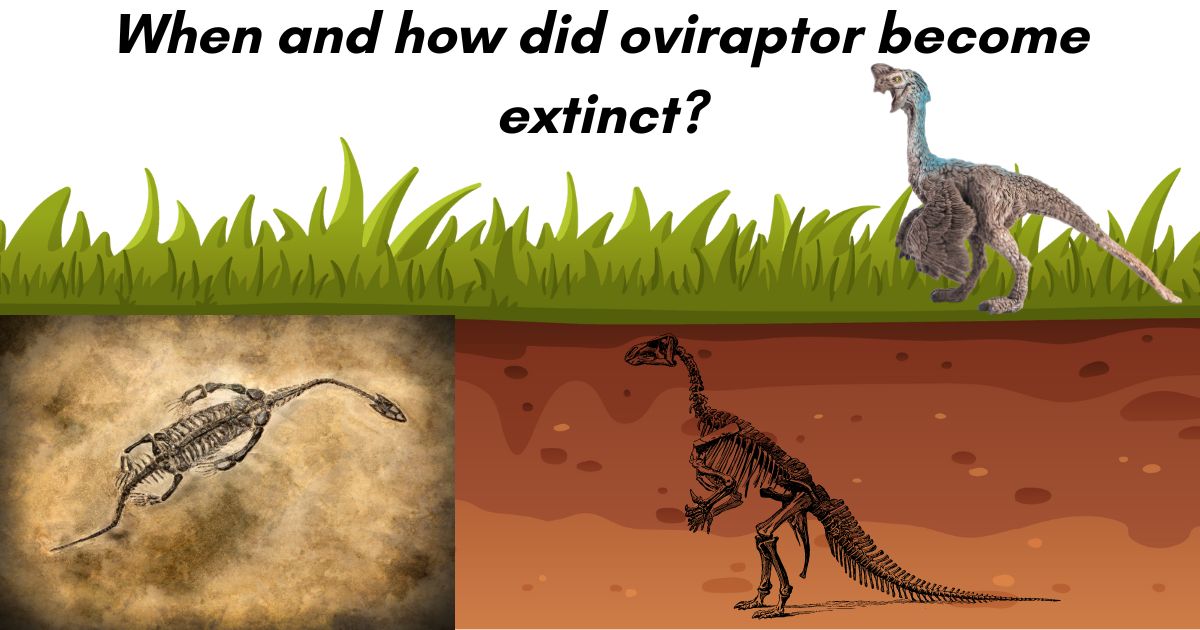When and how did oviraptor become extinct? Investigating the Destiny of a Mesozoic Dinosaur

Introduction
In the chronicles of ancient animals, the oviraptor stands out as a captivating dinosaur, however its destiny remains covered in secret. When and how did oviraptor ended up terminated? Unraveling this address requires diving into the profundities of paleontological inquire about and piecing together clues from the Mesozoic era.
What is an Oviraptor?
Before digging into its termination, let’s to begin with get it what an oviraptor was. Oviraptors were a bunch of little, bird-like dinosaurs that lived amid the Late Cretaceous period, roughly 75 to 70 million a long time back. These animals had a place to the theropod gather, characterized by their bipedal position and carnivorous diet.
Habitat and Distribution
Oviraptors possessed the endless field of the antiquated supercontinent known as Laurasia, which enveloped present-day Asia and North America. Fossil disclosures demonstrate their nearness basically in districts such as Mongolia and China, where various examples have been unearthed.
When did Oviraptors Disappear?
The timing of oviraptor termination is a subject of progressing logical request. Current prove recommends that oviraptors vanished amid the Late Cretaceous period, nearby the mass termination occasion that checked the conclusion of the Mesozoic time. This cataclysmic occasion, known as the Cretaceous-Paleogene (K-Pg) termination occasion, happened around 66 million a long time ago.
Theories on Oviraptor Extinction
Several speculations have been proposed to clarify the death of oviraptors:
Impact Occasion: One conspicuous speculation proposes that a expansive space rock or comet affect activated the K-Pg termination occasion, driving to far reaching natural demolition. This disastrous occasion would have caused fierce blazes, tsunamis, and a consequent worldwide cooling period, coming about in the collapse of biological systems and the termination of various species, counting oviraptors.
Volcanic Action: Another hypothesis ensnares enormous volcanic emissions, especially the Deccan Traps in present-day India, as a contributing figure to the oviraptor termination. Volcanic action would have discharged tremendous amounts of cinder, gasses, and pressurized canned products into the environment, driving to climate unsettling influences and territory destruction.
Climate Alter: Vacillations in worldwide climate designs, such as changes in temperature and ocean levels, may have too played a part in the decrease of oviraptors. Shifts in natural conditions seem have disturbed nourishment sources and breeding environments, setting noteworthy push on oviraptor populations.
Competition and Predation: Seriously competition for assets and predation weight from other dinosaur species might have applied extra strain on oviraptors, contributing to their possible extinction.
Evidence from Fossil Discoveries
Paleontologists depend on fossil prove to reproduce the past and pick up bits of knowledge into the termination of oviraptors. Fossilized remains give profitable clues almost the life systems, behavior, and biology of these old animals. By examining the dissemination of oviraptor fossils and their related sedimentary situations, researchers can induce angles of their way of life and environment preferences.
Conclusion
In conclusion, the address of when and how oviraptors got to be terminated is a complex astound that proceeds to interest paleontologists around the world. Whereas the correct circumstances encompassing their death stay tricky, progressing inquire about and revelations guarantee to shed assist light on the destiny of these baffling dinosaurs.
FAQs For When and how did oviraptor become extinct?
Q: What did oviraptors eat?
A: Oviraptors were likely omnivorous, bolstering on a count calories of little vertebrates, creepy crawlies, plants, and conceivably eggs.
Q: Were oviraptors closely related to birds?
A: Yes, oviraptors had a place to the theropod gather of dinosaurs, which too incorporates cutting edge feathered creatures. They shared various anatomical similitudes with winged creatures, such as empty bones and feathers.
Q: How enormous were oviraptors?
A: Oviraptors were generally little dinosaurs, extending in estimate from almost 1 to 2 meters in length, depending on the species.
Q: Where have oviraptor fossils been found?
A: Oviraptor fossils have been found fundamentally in Mongolia and China, in spite of the fact that examples have moreover been found in other parts of Asia and North America.
Q: Did oviraptors lay eggs?
A: Yes, oviraptors were known to lay eggs, as prove by fossil disclosures of homes containing eggs accepted to have a place to this dinosaur gather.